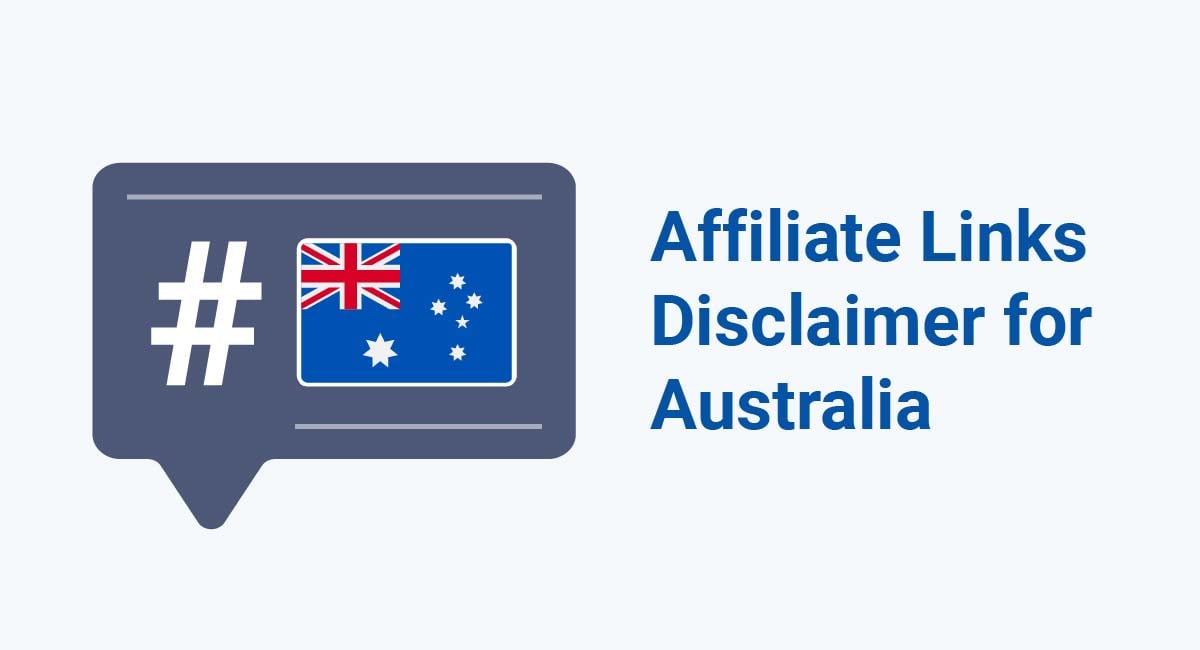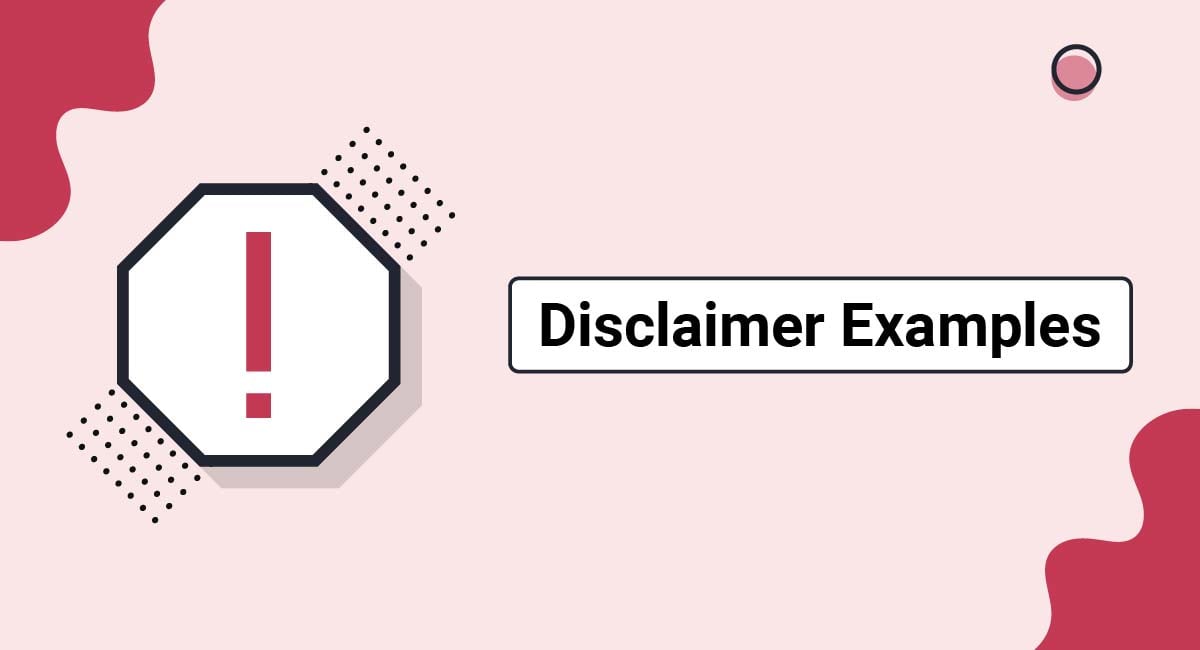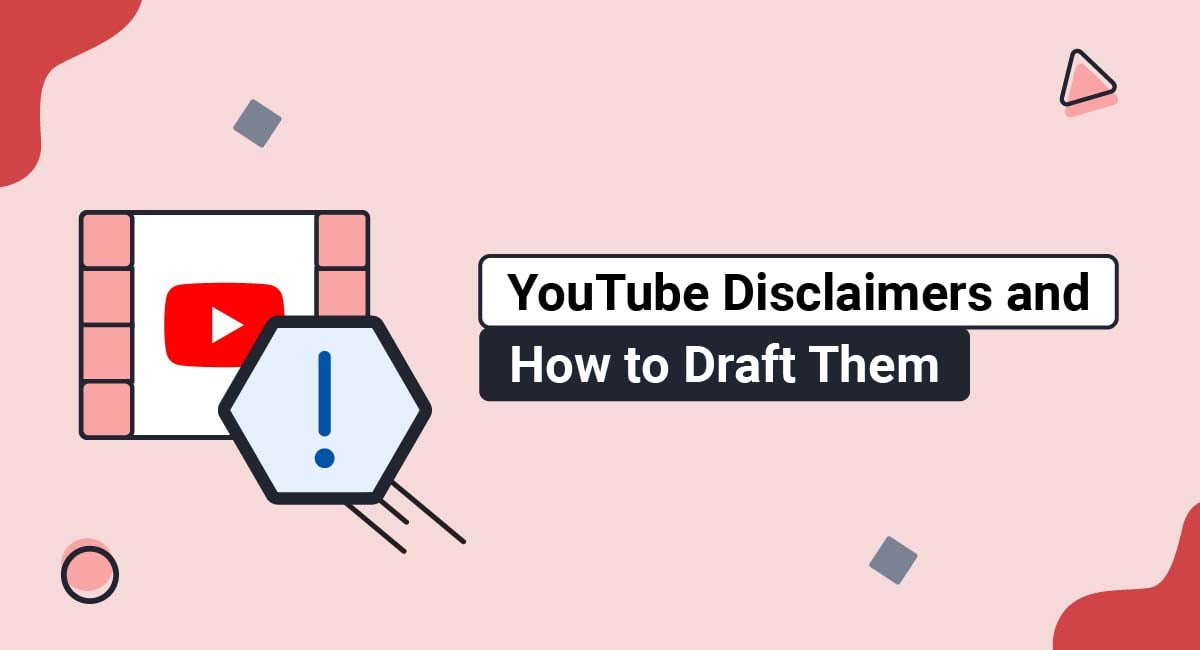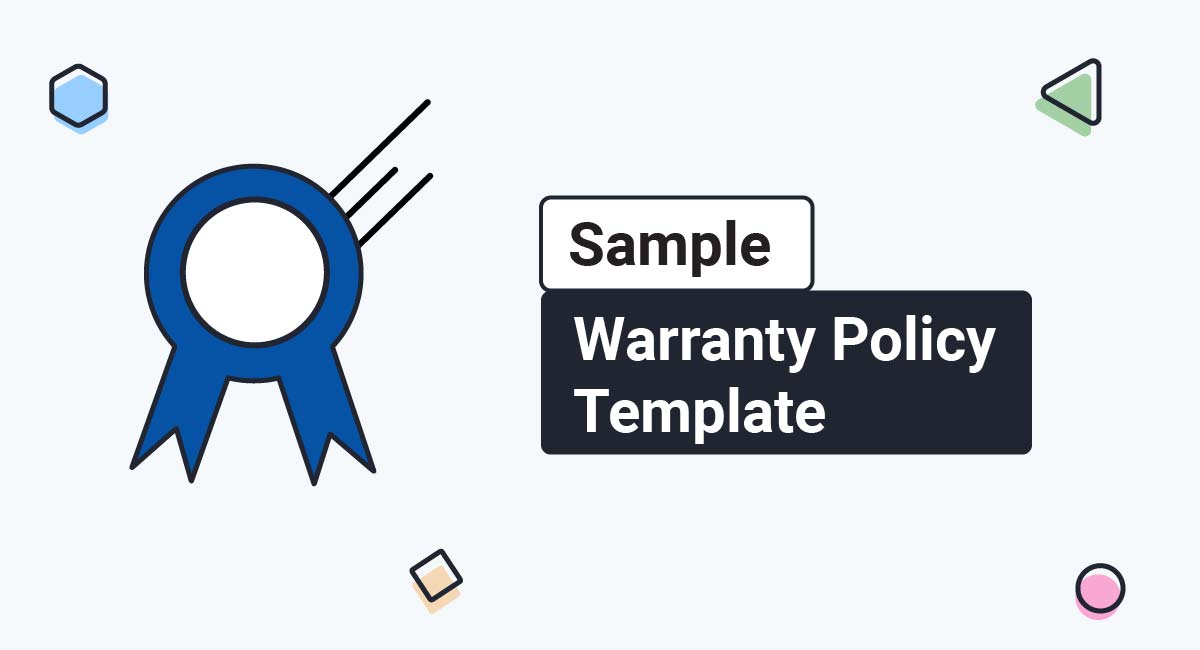On February 1, 2021, the Australian Association of National Advertisers (AANA)'s disclosure guidelines went into effect. These influencer marketing guidelines govern influencers, bloggers, and other marketers who do business in Australia.
This article will discuss Australian disclosure guidelines and what affiliate marketers who do business in Australia should do to ensure they're compliant.
Our Disclaimer Generator can generate a legal disclaimer for your business, website or mobile app. Just follow these steps:
-
At Step 1, select where your Disclaimer will be used.
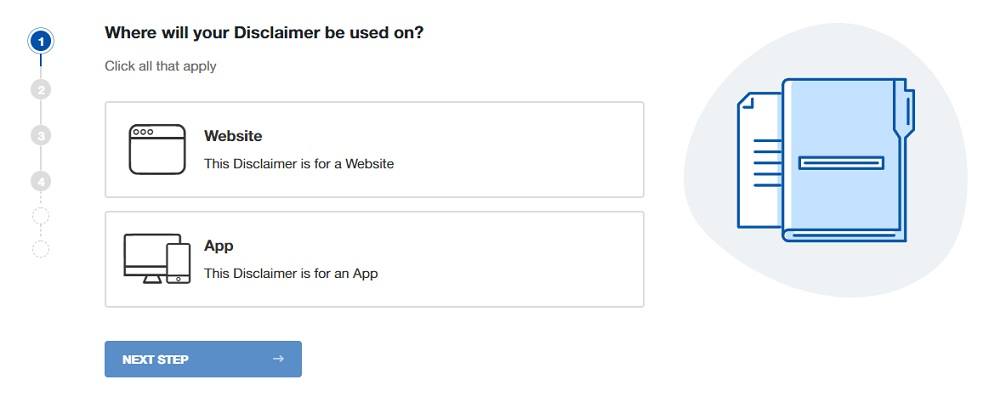
-
At Step 2, add in information about your website/app and business.
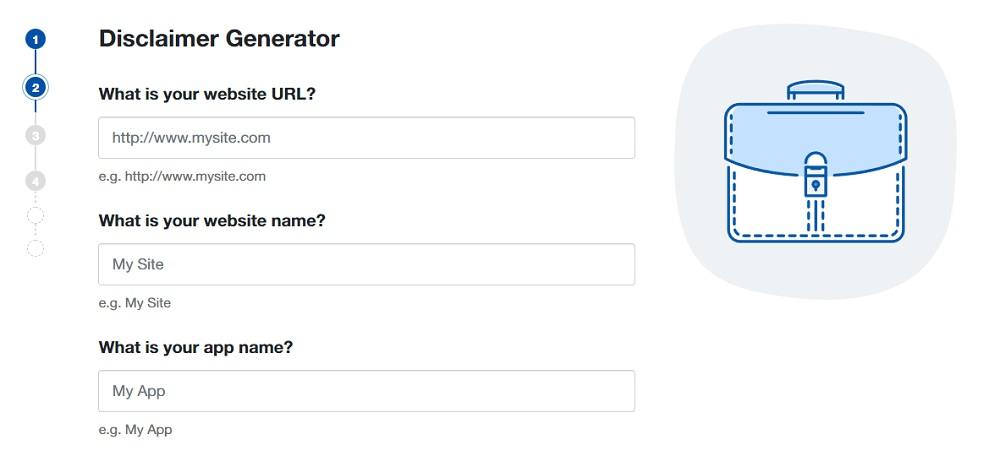
-
Answer some questions about your business practices.
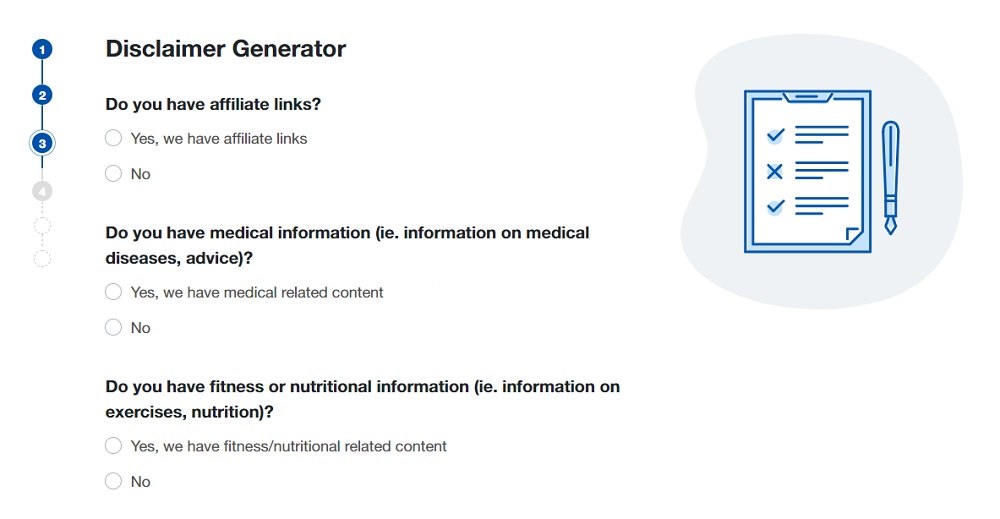
-
Enter an email address where you'd like to receive your Disclaimer and click "Generate."
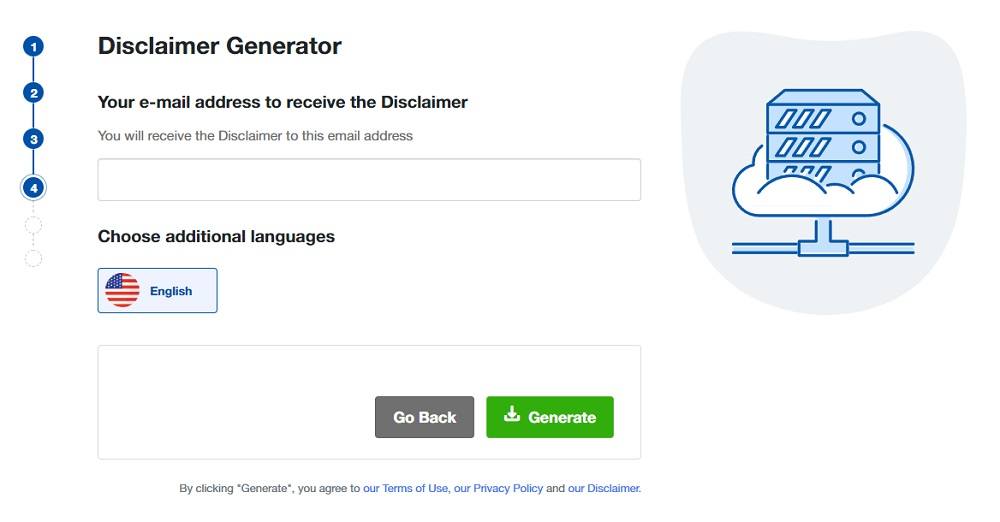
Done! You'll be able to instantly access and download your new Disclaimer.
- 1. What is an Affiliate Link Disclosure?
- 2. Relevant Laws Regarding Affiliate Links Disclaimers
- 2.1. The Australian Spam Act
- 3. Who Needs to Use Affiliate Links Disclosures?
- 4. When are Affiliate Disclaimers Needed?
- 5. The ACCC's Guiding Principles
- 5.1. Principle 1: Be transparent about commercial relationships
- 5.2. Principle 2 - Do not publish misleading reviews
- 6. Where to Display Your Affiliate Links Disclaimer
- 7. Examples of Australian Affiliate Links Disclaimers
- 8. Penalties for Non-Compliance with the AANA's Code
- 9. Tips for Compliance
- 10. Summary
What is an Affiliate Link Disclosure?
Affiliate link disclosures are basically disclaimers that state that site owners earn a commission when visitors click on an affiliate link in a landing page or blog post and purchase. These disclosures highlight affiliate relationships and allow customers to enter a transaction fully aware.
Here's an example:
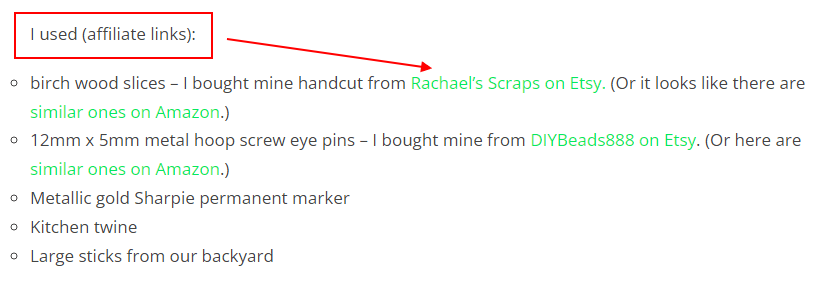
Importantly, affiliate disclosures aren't just a "nice thing" to include on your affiliate website. The new AANA Code of Ethics' guidelines (the Code) state that:
"Influencer and affiliate marketing often appears alongside organic/genuine user generated content and is often less obvious to the audience. Where an influencer or affiliate accepts payment of money or free products or services from a brand in exchange for them to promote that brand's products or services, the relationship must be clear, obvious and upfront to the audience and expressed in a way that is easily understood (e.g. #ad, Advert, Advertising, Branded Content, Paid Partnership, Paid Promotion). Less clear labels such as #sp, Spon, gifted, Affiliate, Collab, thanks to ... or merely mentioning the brand name may not be sufficient to clearly distinguish the post as advertising."
Relevant Laws Regarding Affiliate Links Disclaimers

It should be noted that while the new AANA's new Code of ethics specifically mentioned affiliate marketers, legal experts have interpreted the older Australian Consumer Law (ACL) to require the same thing.
In fact, section 18 of the ACL demands that marketers refrain from making misleading or false statements about commercial relationships. Obviously, affiliate relationships are commercial in nature.
The Australian Spam Act
Then there's the Australian Spam Act, which regulates online marketing activities. It bans businesses from sending or causing to send unsolicited commercial messages. The Spam Act prohibits affiliates from doing any of the following:
- You must not transmit any electronic marketing messages to recipients without their consent
- You must clearly identify who authorized the message
- You must allow people to unsubscribe so they can opt out from receiving future messages
While the Spam Act didn't address the need for affiliate disclosures, you can see a clear trend toward requiring full transparency from affiliates.
Who Needs to Use Affiliate Links Disclosures?

The question may sound silly since affiliate marketers obviously need to be using disclaimers. However, for the sake of total clarity, keep in mind the following.
Anybody who wants to monetize their audience via affiliate links must use an affiliate disclosure statement on any website, channel, or profile on social media. You must disclose any affiliate relationship if you earn an income through affiliate marketing.
It doesn't matter if you publish YouTube videos, Tweets, or blog posts. The same rules apply. Remember that social influencers and bloggers can be affiliate marketers, and the former can be incredibly visible with daily audiences that number in the millions.
Do Australian regulators like the Australian Competition and Consumer Commission (ACCC) monitor the Internet for links to affiliate sites that aren't disclosed? Maybe, but enforcement would be difficult given the fact that there are more than 1.7 billion websites online.
When are Affiliate Disclaimers Needed?
Affiliate disclaimers are necessary when the answer to the following questions about advertising and marketing meet these two key criteria:
- Is the marketer able to exercise reasonable control over the material?
- Is the material designed to attract the public's attention in a way that promotes a product?
To be considered advertising under the AANA Codes, the material must contain both of the above-mentioned factors.
While parts of the advertising guidelines are open for interpretation, the AANA outlined 18 scenarios and guidance for each situation to provide additional context.
The ACCC's Guiding Principles

To help businesses stay within the law, the ACCC has created the following guidelines.
Principle 1: Be transparent about commercial relationships
Using paid endorsements creates competitive advantages over rival businesses, impacting consumer perceptions of the competing products. Consumers must be made aware of commercial arrangements behind product endorsements, such as through a disclaimer.
Principle 2 - Do not publish misleading reviews
Consumers might be misled by reviews or endorsements that appear to be impartial but were actually created by:
- The company that provides the products
- Competitors
- Third parties acting on behalf of one or more of the above
- Brand ambassadors are paid to promote products that aren't popular with ordinary consumers
- An incentive offered to enhance the user's experience with the product
Where to Display Your Affiliate Links Disclaimer

The answer is that the most obvious, most conspicuous place you can possibly show off your disclaimer is the best choice.
It must stand out from the background and be easy to read.
Let's start by addressing the things that you shouldn't do:
- You should not hide your affiliate disclaimer text in your site's Privacy Policy and/or Terms of Service. (You can include it in these places, but not only there.)
- You should not hide your disclaimer page in a difficult-to-find menu item or sub-menu
- Do not rely on the statement "I use affiliates links on this blog" on your 'About Us' page
- You should not limit your affiliate disclaimer to your website's footer
- Do not try to reduce, hide or obscure your affiliate disclaimer
If you don't understand why these points are on the "Don't do" list, refer back to the AANA's guidelines, which say to make sure you display your disclaimer in a way that is "clear, obvious and upfront to the audience and expressed in a way that is easily understood."
Examples of Australian Affiliate Links Disclaimers

Affiliate link disclaimers come in a variety of styles, lengths and formats. The important part is that they get across the point that you may obtain something of material value if someone uses your link.
Here are 5 examples offered by Stay at Home Mum
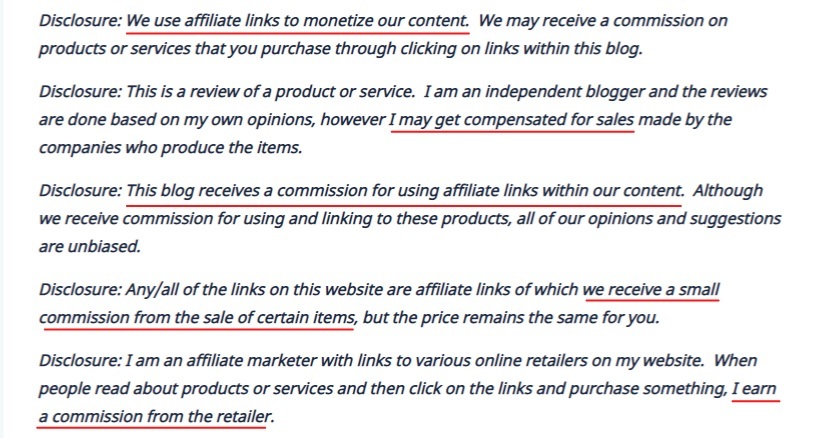
As you can see, many of these statements are the bare minimum. They can be much longer.
Here's an example of an affiliate link disclaimer placed at the beginning of a blog post. This puts readers on notice that the rest of the post will include these types of links:

Here's how you can add one to an email that includes affiliate links. This helps meet the requirement that the link disclaimer be placed close to the links themselves. For example, having a disclaimer on your website but then sending out emails with affiliate links would not be adequate:
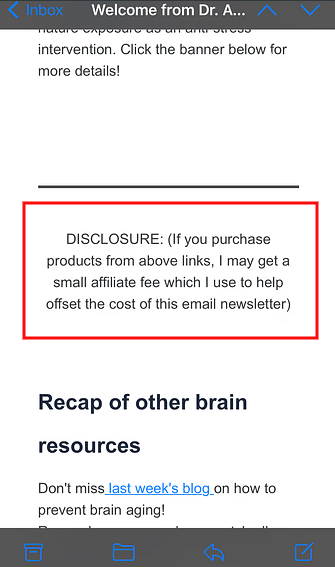
Here's how you can include a short disclaimer, then link it to a longer disclaimer page that has more detailed information. This is a great tactic if you want to have a longer disclaimer, but fitting it at the beginning of a post would be excessive or nearly impossible:
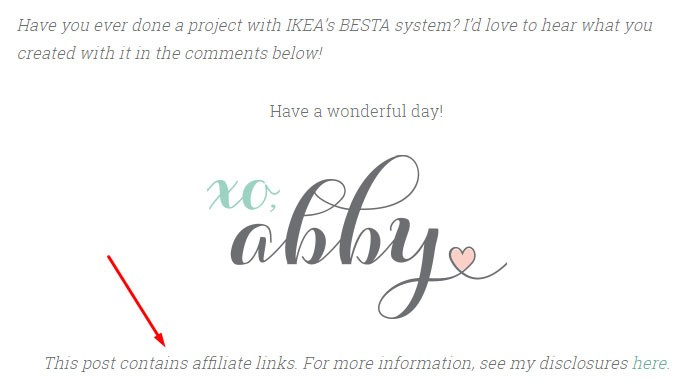
As you can see, the information across all types of disclaimers is similar, while the style and format is tailored to the site.
Penalties for Non-Compliance with the AANA's Code

For now, there are no financial penalties for breaching the AANA's Code. Furthermore, Ad Standards' rulings are not binding or enforceable.
So, why should affiliate marketers doing business in Australia care or comply?
The answer is that the negative publicity that rulings from the Ad Standard's panel generate is a deterrent. Ad Standards also has the power to refer matters to regulators such as the ACCC or other media bodies.
Thus, while the regulating bodies themselves may not be monitoring your marketing activities, others are, and you can still be reported.
Additionally, it is crucial to recall that the ACL's general prohibitions cover social media advertising against misleading, false, or deceptive conduct.
Although the ACCC has yet to enforce any affiliate advertising violations, the ACCC's best practices guidelines for publishing online reviews can be relevant. They make it clear that brand owners must disclose compensation received in exchange for reviews, and comply with the ACL.
Any failure to comply could result in court action against all parties (e.g., the brand, agency, and marketer could be held responsible for failing to comply with court orders.
Additionally, severe penalties may be imposed, including formal warnings or enforceable undertakings, infringement notifications, financial penalties, and injunctions to stop future conduct.
Tips for Compliance

Disclosure guidelines for Australian affiliate marketers vary depending on the type of content being created. Some types, such as a product review or article, require more disclosure than others, like social media posts and blogs.
For example, if you were reviewing a new product, you should include at least one sentence stating your relationship to the company and what they will receive from you in return (i.e., free products). You can also use hashtags like #ad or mention sponsors by name in post copy.
In general, however, you should keep the following in mind as best practices for staying compliant:
- Affiliate marketers and brand owners should ensure the use of up-front hashtags (e.g., #ad or #sponsored) in all social media content
- The brand owner or affiliate marketer (whoever controls the content) has the responsibility of developing content that conforms to the AANA Code
- Brand owners, affiliate marketers, and influencers must comply with the Code. They can also be held liable for any breaches of the ACL.
- Always disclose sponsored arrangements and paid endorsements to avoid misleading your audience
- You must not make false, deceptive, or misleading claims concerning the products or services that you promote
- You must have actually used the products and services you endorse
- You truly believe the claims made in promoting the products and services, which you market
Summary
In summary, Australia implemented the disclosure guidelines of the Australian Association of National Advertisers on February 1, 2021. The guidelines impact affiliate marketers, influencers, bloggers, and other marketers who do business in Australia.
Affiliate marketing is an effective way of attracting new customers and growing your business. Still, you need transparency to build trust among consumers, which the AANA guidelines will help achieve.
Affiliate marketers are responsible for disclosing sponsored arrangements and paid endorsements to avoid misleading their audience. They can also be held liable for any breaches of the Australian Consumer Law (ACL).
If you earn an affiliate income, you must disclose any material relationships. It doesn't matter if you publish Tweets, articles, or Snaps on SnapChat; the same rules apply. Social influencers, as well as bloggers, can engage in affiliate marketing. The former can have a massive following with millions of daily viewers. Therefore disclaimers are vital for these individuals.
Additionally, affiliate marketers doing business in Australia must comply with the Code and should not make false, misleading, or deceptive claims about the products or services that they promote.
Finally, when choosing where and how to display your affiliate marketing disclaimer, keep in mind that the guidelines demand that it be "clear, obvious and upfront to the audience and expressed in a way that is easily understood."

Comprehensive compliance starts with a Privacy Policy.
Comply with the law with our agreements, policies, and consent banners. Everything is included.
